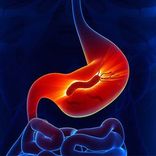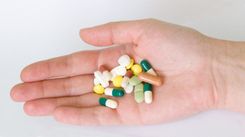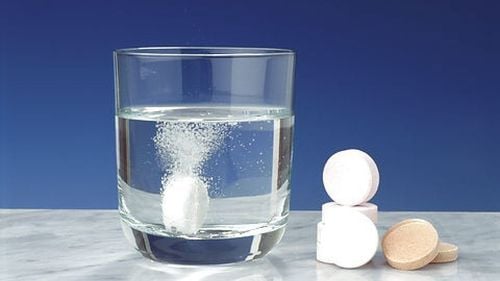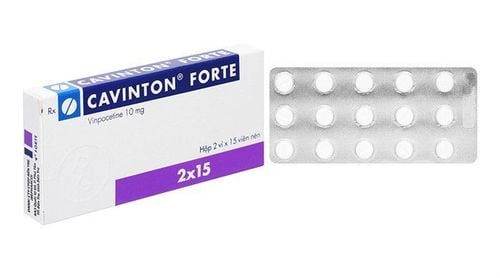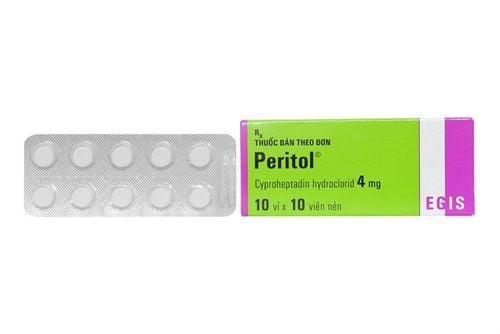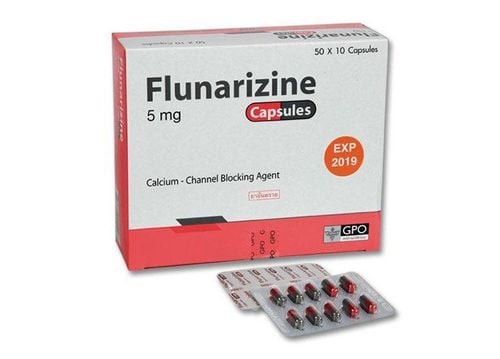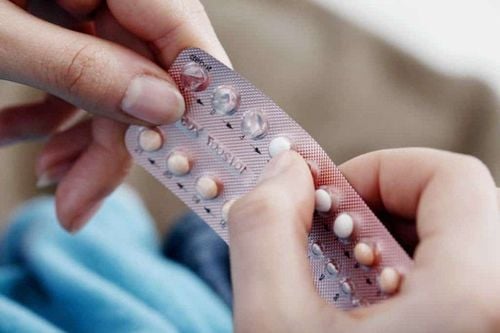Stugeron 25mg is a drug in the H1 antihistamine group, used to prevent and treat symptoms such as dizziness, nausea, motion sickness.
1. What is Stugeron 25mg?
Stugeron 25mg tablets contain 25mg cinnarizine - an active ingredientand sufficient excipients.
Stugeron 25mg contains cinnarizine, a piperazine derivative with H1 antihistamine, anticholinergic and sedative effects. Stugeron 25mg can block receptors in the vestibular end organs and inhibit the activation of histamine and acetylcholine secretion.
2. What is the mechanism of action of stugeron tablets?
Stugeron 25mg is also a calcium antagonist. The active ingredient cinnarizine inhibits the contraction of vascular smooth muscle cells by blocking calcium channels. In addition to this direct calcium antagonist effect, cinnarizine also reduces the activity of substances that have a vasoconstrictor effect, such as norepinephrine and serotonin, by blocking receptor-operated calcium channels. The blockade of calcium influx into cells is tissue-selective, and results in anti-vasoconstrictor properties without affecting blood pressure and heart rate.
Stugeron 25mg can further improve deficient microcirculation by increasing the deformability of red blood cells and reducing blood viscosity, helping to reduce the hypoxia of cells. The active ingredient cinnarizine in the drug inhibits stimulation of the vestibular system, leading to inhibition of nystagmus and other autonomic disorders. Acute episodes of vertigo can be prevented or reduced with stugeron 25mg.
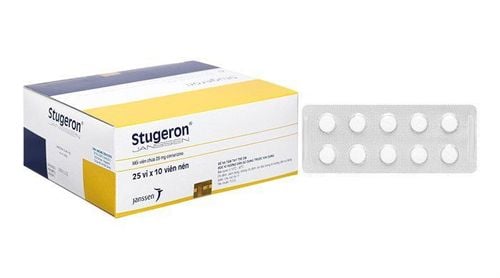
3. Pharmacokinetics
Absorption: After taking the medicine, cinnarizine is absorbed from the gastrointestinal tract and reaches peak plasma concentrations in 2 - 4 hours.
Distribution: The plasma protein binding of the active ingredient cinnarizine in stugeron 25mg is 91%.
Metabolism: Cinnarizine is extensively metabolized mainly via CYP2D6.
Excretion: After 72 hours, the drug is still excreted in the urine in a metabolized form. Half-life (t1/2) is about 3 - 6 hours. Stugeron 25mg is excreted mainly in the feces in unchanged form and in the urine mainly in the metabolized form.
4. Indications and contraindications of stugeron 25mg
4.1. Indications
Cerebral circulatory disorders: Maintenance treatment of symptoms of cerebrovascular origin, such as dizziness, tinnitus, vascular headache, irritability, memory loss, lack of concentration...
Prophylaxis of migraine.
Balance disorders: Maintenance treatment of symptoms of vestibular disorders, including dizziness, vertigo, tinnitus, nausea and vomiting, nystagmus.
Peripheral circulatory disorders: Stugeron 25mg is indicated for maintenance treatment of symptoms of peripheral circulatory disorders such as Raynaud's syndrome, acrocyanosis, interruption, nutritional disorders, nutritional ulcers and varicose veins, dysesthesias, nocturnal cramps, cold extremities.
Motion sickness: Stugeron 25mg is indicated for the prevention of motion sickness.
4.2. Contraindications
Stugeron tablets are not indicated for people who are sensitive to cinnarizine or any of the ingredients of the drug. Patients with porphyrin metabolism disorders are also not prescribed
5. Dosage and administration
5.1. Administration
Stugeron 25mg tablets are taken orally and should be taken after meals to limit the side effects on the stomach of the drug.
5.2. Dosage
Prevention of motion sickness: Adults take one stugeron 25mg tablet at least 30 minutes to 2 hours before traveling by car; then, repeat every 8 hours if necessary. Children 5 - 12 years old, use half the adult dose.
Vestibular disorders: Adults take one stugeron 25mg tablet, 3 times a day. Children 5 - 12 years old, use half the adult dose.
Cerebrovascular disorders: Adults take one stugeron 25mg tablet, 3 times a day.
Peripheral vascular disorders: Adults: 2 - 3 stugeron 5 mg tablets x 3 times / day. The maximum dose should not exceed 225mg / day.

6. Caution
Like other antihistamines, stugeron tablets may cause epigastric pain. Taking the medicine after meals helps avoid this side effect.
Stugeron tablets may cause drowsiness, especially at the beginning of treatment, so after taking the medicine, you should avoid tasks that require alertness such as driving or operating machinery.
Long-term use of stugeron tablets should be avoided in the elderly, because it may cause an increase or appearance of extrapyramidal symptoms, sometimes combined with a feeling of depression when using the medicine for a long time.
Caution should be taken when using high doses of stugeron tablets in patients with hypotension because it can cause a fall in blood pressure.
Although in animal studies, stugeron tablets have not shown teratogenic effects as with all drugs. However, patients should only use stugeron tablets during pregnancy if the therapeutic benefits outweigh the possible risks to the fetus. Because antihistamines can cause many unwanted effects in infants. Almost all antihistamines appear in milk in different amounts, stugeron tablets should be used during breastfeeding only when the therapeutic benefit to the mother outweighs the possible risk to the child.
7. Adverse drug reactions (ADR)
Common, frequency greater than 1/100: on the central nervous system causing drowsiness, on the digestive system causing digestive disorders.
Uncommon, frequency between 1/1,000 - 1/100: on the central nervous system causing headache; on the digestive system such as dry mouth, weight gain and other unwanted side effects such as sweating, allergic reactions.
Rare, frequency less than 1/1,000: on the central nervous system such as extrapyramidal symptoms in the elderly or when treated for a long time. On the cardiovascular system causing decreased blood pressure when using high doses.
Instructions for handling ADR: Drowsiness and digestive disorders can be prevented by starting at a low dose and gradually increasing the dose. For those who observe that the disease is getting worse or extrapyramidal symptoms appear when treating the elderly for a long time, the drug must be stopped.
8. Overdose
Symptoms and signs of stugeron tablet overdose include: altered consciousness ranging from drowsiness to stupor and coma, vomiting, or extrapyramidal symptoms, muscle hypotonia. In a small number of children, seizures may occur. Clinical consequences are not serious in most cases, but deaths have been reported following single and multiple overdoses involving cinnarizine.
There is no specific antidote for stugeron tablet overdose. Treatment of overdose is symptomatic and supportive. Activated charcoal may be given for desorption if deemed appropriate.
9. Drug interactions
Stugeron tablets may interact with alcohol (a central nervous system depressant) and tricyclic antidepressants. Specifically, when used concurrently with Stugeron, these medications can increase the sedative effects of each drug or of Stugeron itself
To arrange an appointment, please call … or make your reservation directly HERE. You may also download the MyVinmec app to schedule appointments faster and manage your reservations more conveniently.

